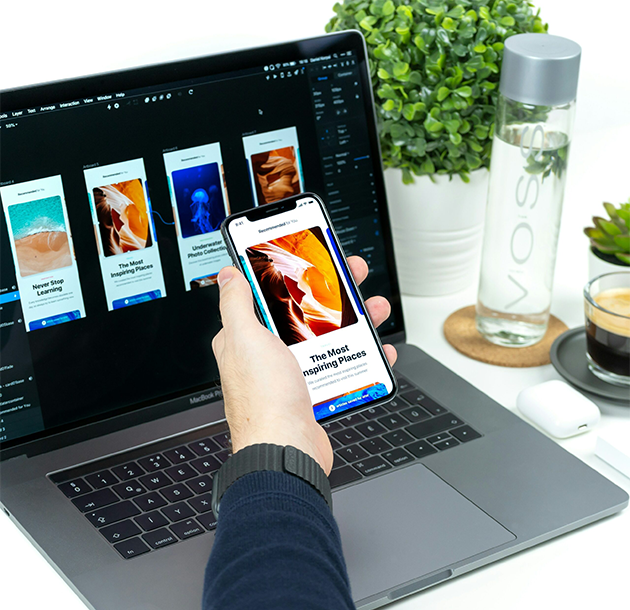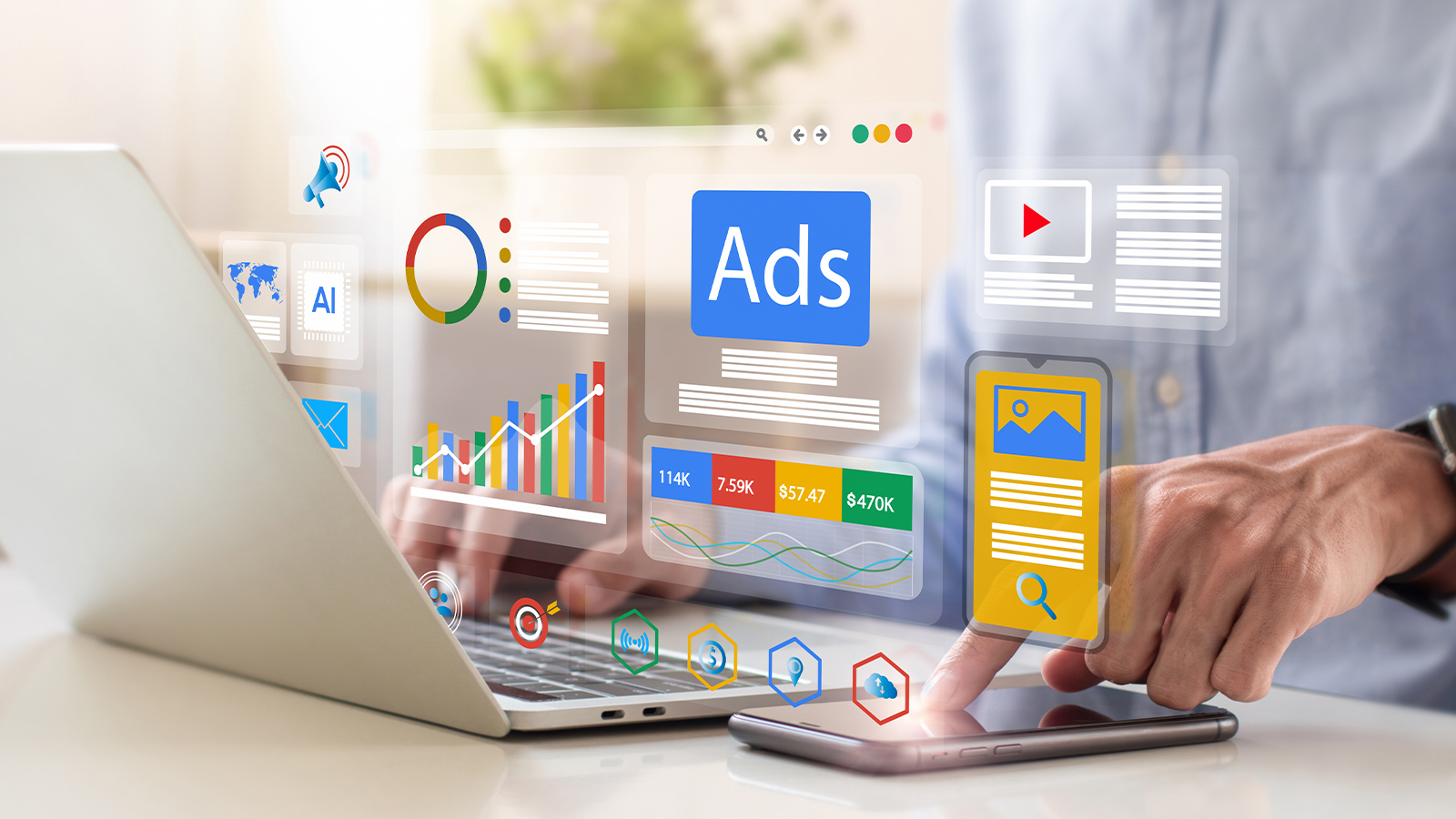User Experience (UX) is part of the 2024 digital lexicon, but how many businesses in B2B are adopting a truly customer centric approach?
Digital plays a crucial role in a company’s marketing strategy, but it seems so little time is dedicated to continuous refinement of the user experience in the B2B space. In our overloaded digital world, time is of the essence for customers who want to land on your site and find what they’re looking for quickly and easily, without having to trawl through endless pages and unnecessarily complex navigation. So shouldn’t a constant review of your UX be a key priority as part of your conversion rate optimisation (CRO) strategy?What do we mean by User Experience?
User Experience is all about putting the user first by understanding what they want to achieve from your website and digital brand touchpoints. In the B2B space, a user journey can be more complex to identify, with multiple stakeholders often involved in researching potential solutions to their challenges. To get buyers to move down the funnel towards that all important conversion, you need to make sure your website is simple to navigate, easy to read and that all relevant information is just a click or two away. Some of the key questions we ask when working with a client on a new web project is, “What do your customers think of your current website?” and “how do they feel you could improve their experience when using it?” As is often the case, these simple questions haven’t truly been considered when developing the web brief, which is more focused on target audiences, challenges, competitive analysis, calls to action (CTA) and brand impression.Are you missing a vital piece of the UX jigsaw by not gathering some direct user insights from the people that you want to engage? We think so, and this is something we’re keen to tap into when gathering the golden nuggets that can turn a good user experience into a great one. Great web design is all about creating a website or digital experience that’s easy for visitors to use and make sense of. The fundamentals of a good user experience start way before a web or landing page is even conceived, with thorough research into the primary user audience, their motivation, challenges, goals, and what they want to get out of their visit to your site.
It then takes into account the content structure and the copy you use to educate and inform users. A good UX design agency will create a logical architecture for all that content to be housed, anticipating the chosen path(s) of your user(s). Then there’s the content itself. Structured within clear navigation, the user should find the right information in the right place, with clear call to actions (CTAs) to achieve their goal.


Generally speaking, a B2B user audience has quite different requirements to B2C buyers, in that decision-makers will often spend more time researching solutions to their problems, wanting to drill down to specific and sometimes technical information.
B2B purchases are more ‘considered’, therefore hard sales conversion isn’t necessarily the best way to nurture audiences who may not yet be quite ready to enter your buying cycle. So, your user experience really needs to be thought through to ensure you can answer all pre-qualification questions, as well as sharing relevant expertise and proof points that show you are a credible potential partner.
With multiple stakeholders often involved in any decision-making, it can be a lengthy and often challenging buying process. With 77% of B2B buyers stating that their latest purchase was very complex or difficult it’s important to keep everyone engaged and interested in your product or service, whilst keeping things simple.
In most cases, your website is the first step in a user’s journey towards solving a problem, so it needs to prioritise the needs of your B2B audience and provide a good user experience to stand any chance of ending in an eventual conversation, conversion, or sale. It not only needs to be aesthetically appealing, but easy to navigate and with well-structured content flows to help users remember your brand when they are ready to enter the buying cycle.
B2B purchases are more ‘considered’, therefore hard sales conversion isn’t necessarily the best way to nurture audiences who may not yet be quite ready to enter your buying cycle. So, your user experience really needs to be thought through to ensure you can answer all pre-qualification questions, as well as sharing relevant expertise and proof points that show you are a credible potential partner.
With multiple stakeholders often involved in any decision-making, it can be a lengthy and often challenging buying process. With 77% of B2B buyers stating that their latest purchase was very complex or difficult it’s important to keep everyone engaged and interested in your product or service, whilst keeping things simple.
In most cases, your website is the first step in a user’s journey towards solving a problem, so it needs to prioritise the needs of your B2B audience and provide a good user experience to stand any chance of ending in an eventual conversation, conversion, or sale. It not only needs to be aesthetically appealing, but easy to navigate and with well-structured content flows to help users remember your brand when they are ready to enter the buying cycle.
Is UX insight gathering worth the budget investment?
We believe it’s a valuable investment to get some first-hand feedback from a selection of users about your current B2B website before committing to a web refresh or new build. This needn’t be a mammoth or costly exercise and can be as simple as adding an exit poll to your current website, reviewing the analytics you have already collected from a new perspective, or adding a heatmap and analytics tool like Hotjar or Microsoft Clarity to your website. This will enable you to better understand current user behaviour, including ‘hot’ and ‘cold’ engagement points. We’ve found UX labs particularly useful when you are specifying or looking to improve customer portals and apps. These sessions can be really interesting to identify ‘gaps’ or ‘walls’ in your user journey, enabling you to make important tweaks which can supercharge your conversions. Plus, you don’t always need to evaluate every page on your website, you could choose, for example, to focus on your most important pages, key entry point pages or your least performing pages. Customer focus groups and one-to-one web UX walkthroughs with questions can also offer invaluable information to help you understand the ‘real world use’ of your digital touchpoints. They can also help you to look at your site objectively through your user’s eyes which can throw up some surprises to challenge your own interpretation of data and analytics. The role of UX in your B2B digital marketing User experience undoubtedly plays a pivotal role in B2B digital marketing, and all elements should be given due consideration to boost the effectiveness of your campaigns and performance of your website, including the key areas mentioned below. First impressions count As we know, B2B companies spend a considerable amount of time researching the solutions to their problems, so establishing a positive brand perception and credibility is key. A large part of that is creating a first-rate user experience across all your touchpoints with consistent visual identity and branding.Minimising user frustrations and ensuring your website is structured to align to different stakeholder needs goes a long way in establishing trust, as does a consistent brand identity with attention to detail in your choice of colour palette, imagery, logos, and typography. Ensuring your content is error-free and well-connected projects a professional brand image that bolsters your credibility and boosts your industry.
Appropriate data capture
Assuming your B2B buyer knows what they need from you, it’s best practice to keep journeys and information succinct. Although a fair amount of time may be spent in the research phase, too much web copy can be off-putting, so it may be wise to provide whitepapers and thought leadership pieces as downloadable or shareable content. This also provides you with data capture opportunities when gated content is appropriate.
A word of caution though, gated content too soon in the journey or applied too rigorously, can have a detrimental effect if users are unwilling to exchange their valuable data for a two-page flyer download or to play a promotional video. So, think about where to apply your data capture to optimise engagement and to minimise page bounce rates. Interaction drives better engagement In a crowded B2B market, your website needs to stand out. Incorporating interactive elements can make your user experience more dynamic and captivating for your audience, keeping you front of mind for B2B buyers. Interactive features like chat boxes, video, clickable infographics, and dynamic carousels can help users to navigate and make sense of the site, as well as making your website more engaging and memorable.
A well-considered responsive design will also improve the accessibility and inclusivity of your website across all devices – two important areas to help build trust and credibility. It also shows an attention to detail and customer-centric values which go a long way in establishing your brand as a market leader.
Mobile layout and content adjustments are also key to a great cross platform user experience. It’s important to really consider how the mobile UX may differ from the desktop version, something we’ll be sharing our thoughts on in another blog shortly. Personalisation can have impact Through building a deeper understanding of a user’s needs and content preferences, a UX design agency can implement targeted experiences for your customers. By addressing specific pain points and providing quick access to relevant and personalised content, you increase your chance of driving conversions, client retention and repeat business.
Streamlining the B2B process can enhance overall user experience and satisfaction, all of which helps to build long-term relationships and boost recommendations and referrals.
A word of caution though, gated content too soon in the journey or applied too rigorously, can have a detrimental effect if users are unwilling to exchange their valuable data for a two-page flyer download or to play a promotional video. So, think about where to apply your data capture to optimise engagement and to minimise page bounce rates. Interaction drives better engagement In a crowded B2B market, your website needs to stand out. Incorporating interactive elements can make your user experience more dynamic and captivating for your audience, keeping you front of mind for B2B buyers. Interactive features like chat boxes, video, clickable infographics, and dynamic carousels can help users to navigate and make sense of the site, as well as making your website more engaging and memorable.
A well-considered responsive design will also improve the accessibility and inclusivity of your website across all devices – two important areas to help build trust and credibility. It also shows an attention to detail and customer-centric values which go a long way in establishing your brand as a market leader.
Mobile layout and content adjustments are also key to a great cross platform user experience. It’s important to really consider how the mobile UX may differ from the desktop version, something we’ll be sharing our thoughts on in another blog shortly. Personalisation can have impact Through building a deeper understanding of a user’s needs and content preferences, a UX design agency can implement targeted experiences for your customers. By addressing specific pain points and providing quick access to relevant and personalised content, you increase your chance of driving conversions, client retention and repeat business.
Streamlining the B2B process can enhance overall user experience and satisfaction, all of which helps to build long-term relationships and boost recommendations and referrals.

The impact of UX on lead generation, conversion, and ROI
In addition to providing a great customer experience, optimising your website UX can also contribute to higher conversion and ROI in the long term. A/B testing is an essential element in improving conversion. By testing different design variations such as layout, headline messaging, CTA buttons or colours, it’s possible to gain insight into the way your users interact with your site and what resonates with them.Analysis of user behaviours onsite can provide the basis for continuous improvements, helping to optimise your conversion rates over time. Continuing to invest in a solid UX design with a customer-centric focus is a smart move for any B2B business. Research carried out by Deloitte and Touche LLP suggests that customer-centric companies were 60% more profitable than companies that weren’t focused on the customer. When it comes to ROI, paid media campaigns can be built on sound strategies and eye catching creative, but without a considered UX approach that goes beyond the initial ad for the landing page, that media spend could be wasted.
The importance of UX design in B2B marketing should never be downplayed or underestimated. Investing in a user-centric approach and tailoring experiences for your customers based on insights, data and feedback can result in increased engagement, better conversion rates and brand loyalty, all of which are essential components for any B2B company’s success and longevity.
Imogen Docx
Account Manager
Final Thought:
A successful B2B website isn’t just a digital brochure, t’s your most powerful marketing asset. When built with the user at its centre, it simplifies complex journeys, answers stakeholder questions and guides prospects toward meaningful action. Investing in UX, through research, testing, interaction design and continuous optimisation, means your site works harder and smarter, improving conversions, reducing bounce rates and building brand credibility in a competitive landscape Ready to elevate your website UX and boost your digital performance? Our team at Upp B2B specialises in all aspects of B2B website excellence, from user insight research and UX strategy to expert design and build. If you’d like tailored advice or to explore how a more user‑centred website can drive engagement and growth, drop us a line for an informal chat at hello@uppb2b.co.uk.


